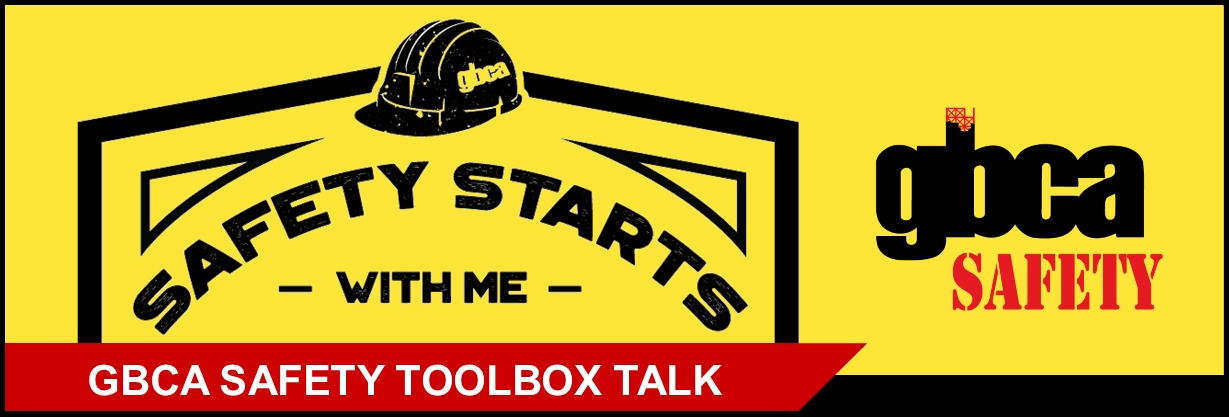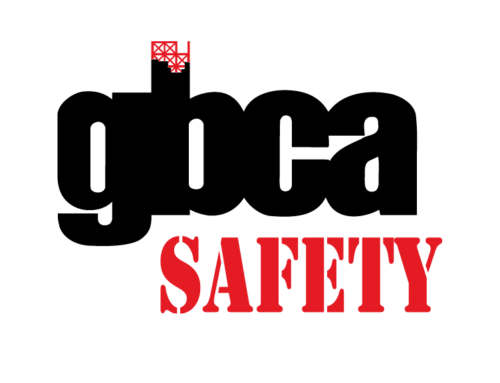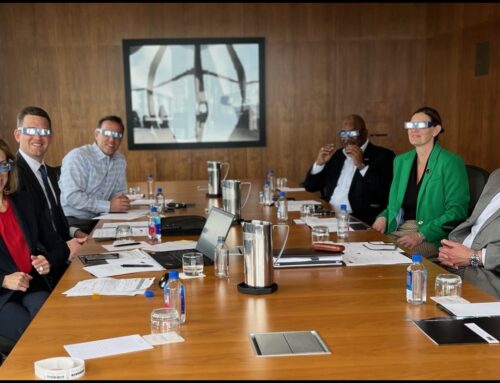This GBCA Safety Toolbox Talk provides tips, guidelines, and reminders for handling flammable liquids on the job site. Click below to download the Toolbox Talk as a handout (includes Sign-In Sheet).
Flammable Liquids on the Job Site
The flash point of a liquid is the temperature at which it gives off sufficient vapor to form an ignitable mixture with air, near the surface of the liquid, or within a container.
Flammable Liquids have a flash point below 100°F and a vapor pressure not exceeding 40 psi at 100°F. Common examples of these on job sites are gasoline, acetone, and turpentine.
Combustible Liquids have a flash point above 100°F. The combustible liquids seen on most construction sites are Class II Liquids, which have a flash point at or above 100°F and below 140°F (60°C). Examples are No. 1, 2 and 3 fuel oils, and kerosene.
These types of liquids are often improperly stored or labeled, so be careful!
Safety Guidelines When Handling Flammable or Combustible Liquids:
- Store and handle them in APPROVED and MARKED containers.
- Use safety cans when dispensing flammable and combustible liquids
- A written identification label indicating the containers specific content must be present on all containers. Red cans are not gas cans unless they read GAS on them.
- Flammable liquid containers/cans must have a flash arresting screen. This prevents the liquid inside the can from combusting if exposed to fire. The flash arresting screen extinguishes the fire before it can reach the fuel.
- NEVER smoke, use spark-producing equipment, or use flame around these liquids.
- Do not fill running machinery with fuel. Turn off the engine.
- Post “NO SMOKING” signs as required near flammable materials storage areas.
- Fuel gas cylinders and oxygen cylinders must be separated by a minimum distance of 20 feet, or with fire resistant barriers. Keep oily rags away from these cylinders.
- Fuel storage tanks must be guarded to prevent damage from vehicular traffic.
Fire Extinguishers must be present near flammable materials. Follow this checklist:
- Distribute fire extinguishers properly around the worksite, free from obstructions, and with clear pathways to access them.
- Check that the correct type of extinguisher is present for the type of flammables nearby.
- Regularly inspect fire extinguishers.
- Ensure that all job site workers have been trained on how to use fire extinguishers.
Remember to record the attendees of your toolbox talk!
Access GBCA’s full library of toolbox talks:





